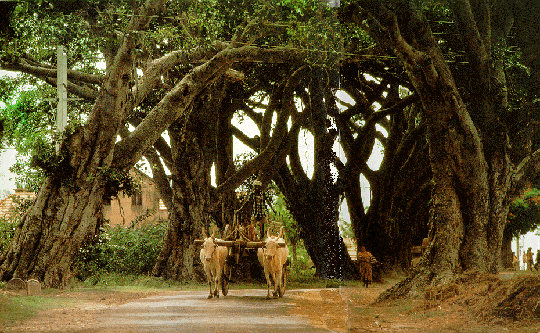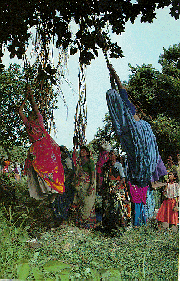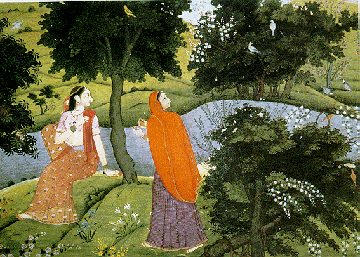|
Tree, Grove and Forest have been integral parts of a number of cultures. The Tree represents both myth and symbolism in India. Their natural habitat, the Forests have been the 'home' of all the workshops, discussions, speculations which lay the guidelines for the Hindu way of living. Hinduism is also described as a tree where it gives rise to various other sects, religions as a natural process. |
| With the progress of the civilization, the need of the tree in urban areas was recognized and it became an inseparable part of lives in the household, community, village and the city. |

|

| Kalidas, a romantic poet, circa. 325 B.C. lists trees, their longings and expectations from the women while waiting to burst into bloom, priyangu craves for touch, bakula thirsts for a mouthful of wine, kurubakan an embrace, mandalongs for soft speech, the champa (frangipani) for sweet provocative smile, nameru favours song and karnikara, a dance. |

|
|
Hinduism describes four stages in man's life, student, married, retired,sanyasi. Out of these three, Brahmacharya - student life, Vanaprastha - retirement and Sanyasa - withdrawl are entwined with the forest. Most of the Vedic Schools were Forest Classrooms run by sages in the forests away from the city distractions. The Banyan Tree would best represent the intentions of the future classroom growth. There is a hope that the community around the classroom would be affected by the enthusiasm and the pride of the students and, ultimately by the street trees which they have cared for. The Neighborhood Trees would be grown in the opposite direction, hence the creation of the Mill Creek Urban Forest would be a two pronged process. |
| forest | place |
